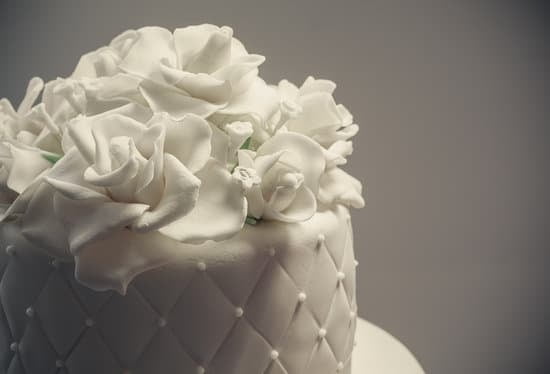How long does a decorated cake last? Whether you’re a baker looking to sell your beautifully crafted creations or simply want your homemade masterpiece to stay fresh for as long as possible, understanding the shelf life of a decorated cake is crucial.
In this blog post, we will delve into the various factors that affect how long a decorated cake can last, explore different types of decorated cakes and their varying shelf lives, provide storage tips, identify signs of spoilage, and offer strategies to extend the shelf life. By the end of this article, you will have a comprehensive understanding of how to make your decorated cakes last longer and stay delicious.
It’s important to recognize that several variables can impact the longevity of a decorated cake. From the ingredients used in its creation to how it’s stored and the types of decorations adorning it, each factor plays a role in determining how long the cake will remain fresh.
By addressing these factors and sharing insights into best practices for preservation, this article aims to equip bakers and enthusiasts alike with knowledge that can help prolong the life of their decorative confections.
Additionally, we’ll discuss specific types of decorated cakes and their unique shelf lives. Whether you’re working with fondant, buttercream, or royal icing, each type of decoration presents its own set of considerations when it comes to maintaining freshness. We hope that by providing an in-depth exploration of these variations, readers will be better equipped to make informed decisions about their baking endeavors and ensure that their creations are enjoyed at their best quality.
Factors Affecting Shelf Life
When it comes to determining the shelf life of a decorated cake, there are several factors that can influence how long it will last before spoiling. Understanding these factors is crucial for anyone who plans to bake or purchase a decorated cake. By being aware of the variables at play, individuals can ensure that their cakes remain fresh and safe to eat for as long as possible.
Ingredients Used
The ingredients used in a decorated cake play a significant role in determining its shelf life. For example, cakes made with dairy or cream-based fillings or frostings will have a shorter shelf life compared to those made with non-perishable ingredients. It is important to consider the perishability of the components used in the cake when assessing its longevity.
Storage Conditions
How a decorated cake is stored also greatly impacts its shelf life. Cakes should be kept in a cool, dry place to prevent spoilage. Exposure to heat and moisture can expedite the deterioration process, causing the cake to go bad faster. Additionally, proper packaging, such as using an airtight container or plastic wrap, can help maintain the cake’s freshness for a longer period of time.
Decoration Types
The type of decoration on a cake can affect its shelf life as well. Certain decorations may contain ingredients that have their own expiration dates or are more prone to spoilage. For example, fresh fruit toppings and whipped cream designs may not last as long as fondant or chocolate decorations. Considering the type of decoration used is essential when gauging how long a decorated cake will remain edible.
Understanding these factors and taking them into consideration when evaluating the shelf life of a decorated cake is key in ensuring that it remains safe for consumption over time. By acknowledging these variables, individuals can make informed decisions about storage methods and ingredient choices that will ultimately prolong the lifespan of their decorative confections.
Types of Decorated Cakes
When it comes to decorated cakes, there are a wide variety of options to choose from. Each type of cake has its own unique ingredients and decorations, which can impact its shelf life. Understanding the different types of decorated cakes and how their shelf life may vary is important for anyone looking to purchase or make a delicious cake for a special occasion.
Buttercream Cakes
One of the most popular types of decorated cakes is the buttercream cake. These cakes are adorned with a smooth and creamy buttercream frosting that can be piped into various designs. The shelf life of a buttercream cake largely depends on the type of filling used, as well as the temperature at which it is stored. Buttercream cakes with fruit fillings may have a shorter shelf life compared to those with non-perishable fillings.
Fondant Cakes
Fondant cakes are known for their smooth and flawless appearance, making them a favorite for weddings and other formal events. The fondant covering acts as a barrier, helping to extend the shelf life of the cake by sealing in moisture. When stored properly, fondant cakes can last longer than some other types of decorated cakes due to this protective outer layer.
Naked Cakes
Naked cakes have become increasingly popular for their rustic and minimalistic appearance. These cakes are adorned with minimal frosting or none at all, allowing the layers and filling to be visible from the outside. Due to the lack of a protective frosting layer, naked cakes typically have a shorter shelf life compared to other types of decorated cakes.
Understanding how each type of decorated cake varies in terms of shelf life can help in making an informed decision when selecting or creating the perfect cake for any occasion. Whether it’s a buttercream, fondant, or naked cake, knowing how long each type can last will ensure that the cake stays fresh and safe for consumption.
Storage Tips
When it comes to prolonging the shelf life of a decorated cake, proper storage is key. Here are some detailed tips for storing your beautifully decorated confection to ensure it stays fresh and delicious for as long as possible:
- Choose the right container: To protect your cake from air, moisture, and other external factors, opt for an airtight container or cake box. Make sure the container is clean and dry before placing your cake inside.
- Refrigeration: Most decorated cakes can be stored in the refrigerator to help preserve their freshness. However, certain types of frosting or decorations may not fare well in the cold temperatures, so it’s essential to consider the specific components of your cake before refrigerating.
- Freezing: If you need to store your cake for an extended period, freezing is an option. Wrap the cake tightly in plastic wrap to prevent freezer burn and then place it in an airtight container or freezer bag. Be sure to label the container with the date of freezing for easy reference.
In addition to proper storage techniques, it’s important to consider where you place your decorated cake. Keep it away from direct sunlight and heat sources, as these can accelerate spoilage. When handling and serving the cake, always use clean utensils and wash your hands to avoid introducing bacteria that could cause premature spoilage.
By following these storage tips, you can maximize the shelf life of your decorated cake and enjoy its deliciousness for an extended period of time. Remember that different types of cakes and decorations may require unique storage methods, so always take those factors into consideration when determining the best way to store your specific confection.
Remember that understanding how long does a decorated cake last goes beyond simply baking and decorating – proper storage plays a crucial role in maintaining its quality over time.
Signs of Spoilage
The answer to this question can vary depending on several factors, including the ingredients used, storage conditions, and the type of decoration. To ensure that you are consuming a safe and delicious cake, it’s essential to be aware of the signs that indicate a decorated cake is no longer suitable for consumption.
One common sign of spoilage in a decorated cake is mold growth. If you notice any fuzzy or discolored spots on the cake, it’s best to avoid consuming it as mold can pose serious health risks. Another indicator that a decorated cake has spoiled is a sour or rancid smell. Freshly baked cakes should have a pleasant aroma, so if you detect any unusual odors, it’s best to discard the cake.
In addition to visual and olfactory cues, changes in texture can also signal that a decorated cake is no longer safe to eat. If the cake feels excessively dry, sticky, or slimy, it may have gone bad. It’s important to pay attention to these details when assessing the quality and safety of a decorated cake before indulging in it.
| Common Signs of Spoilage | Description |
|---|---|
| Mold Growth | Fuzzy or discolored spots on the cake |
| Unpleasant Odor | Sour or rancid smell indicating spoilage |
| Texture Changes | Excessively dry, sticky, or slimy texture |
Extending Shelf Life
When it comes to extending the shelf life of a decorated cake, there are several tips and tricks that can be employed to ensure that your creation lasts as long as possible. Whether you are a professional baker or a home baker preparing for a special occasion, knowing how to preserve the freshness of your cake is essential.
One effective method for extending the shelf life of a decorated cake is freezing. By properly wrapping and freezing the cake, you can keep it fresh for an extended period of time. To freeze a decorated cake, follow these steps:
- Allow the cake to cool completely after baking
- Wrap the cake tightly in plastic wrap to prevent freezer burn
- Place the wrapped cake in an airtight container or freezer bag
- Label and date the container so you know when it was frozen
- When ready to enjoy, allow the cake to thaw in the refrigerator before serving
In addition to freezing, some bakers may choose to use preservatives in their cakes to prolong their shelf life. While this is a common practice in commercial baking, it’s important to carefully consider the types and amounts of preservatives used.
Certain preservatives can affect the flavor and texture of the cake, so it’s crucial to strike a balance between preservation and taste. If you decide to use preservatives in your decorated cakes, be sure to research and follow proper guidelines for safe usage.
By utilizing these methods, you can significantly extend the shelf life of your decorated cakes and ensure that they remain fresh and delicious for as long as possible. Understanding how these preservation techniques work and implementing them effectively can make a significant difference in maintaining the quality of your baked creations.
Case Studies
In this section, we will delve into real-life examples of decorated cakes and how their shelf life can be affected by various factors and storage methods. By understanding these case studies, readers will gain valuable insights into the importance of proper storage and the impact of different ingredients on the longevity of a decorated cake.
One example is a fondant-covered cake with fresh fruit decorations. When stored in a cool, dry place, this type of cake can last for about 2-3 days before the fruit starts to spoil. However, if kept in the refrigerator, it can last up to 5 days. The moisture from the fruits and the perishable nature of fresh ingredients significantly impact the shelf life of this decorated cake.
On the other hand, a buttercream-frosted cake with sugar flower decorations has a longer shelf life. When stored at room temperature in a sealed container, this type of cake can last for about 4-5 days due to the stability of buttercream and the non-perishable nature of sugar flowers. However, if refrigerated, it can last up to 7-10 days.
Lastly, a naked cake with cream cheese frosting and no perishable decorations has a shorter shelf life. Due to the higher moisture content in cream cheese frosting and lack of sealing from fondant or buttercream, this type of cake should be consumed within 2-3 days when stored in the refrigerator.
These case studies demonstrate how different types of decorated cakes have varying shelf lives based on factors such as ingredients used and storage methods employed. It is important for bakers and consumers alike to consider these factors when determining how long a decorated cake will last.
Conclusion
In conclusion, understanding the shelf life of a decorated cake is essential for anyone who loves baking or enjoys indulging in delicious desserts. As discussed in this blog post, several factors can affect how long a decorated cake lasts, including the ingredients used, storage conditions, and the type of decoration applied. It’s crucial to consider these factors when preparing and storing a decorated cake to ensure its freshness and safety for consumption.
Furthermore, different types of decorated cakes may have varying shelf lives due to their unique ingredients and designs. Whether it’s a fondant-covered cake or a buttercream masterpiece, knowing how to properly store each type can make a significant difference in prolonging its shelf life. By following the storage tips provided in this blog post, individuals can maximize the lifespan of their decorated cakes and enjoy them for longer periods.
Overall, this blog post has highlighted the importance of recognizing the signs of spoilage in decorated cakes and has offered practical solutions for extending their shelf life. By implementing proper storage methods and being mindful of expiration dates, individuals can savor their beautifully crafted cakes while maintaining their quality and taste.
Whether it’s through freezing or using preservatives, there are various ways to prolong the shelf life of a decorated cake, allowing bakers and consumers alike to enjoy their creations without concerns about spoilage. Ultimately, understanding how long a decorated cake can last is key to ensuring that every slice is as delightful as the first.

Welcome to our cake decorating blog! My name is Destiny Flores, and I am the proud owner of a cake decorating business named Cake Karma. Our mission is to provide delicious, beautiful cakes for all occasions. We specialize in creating custom cakes that are tailored specifically to each customer’s individual needs and tastes.





